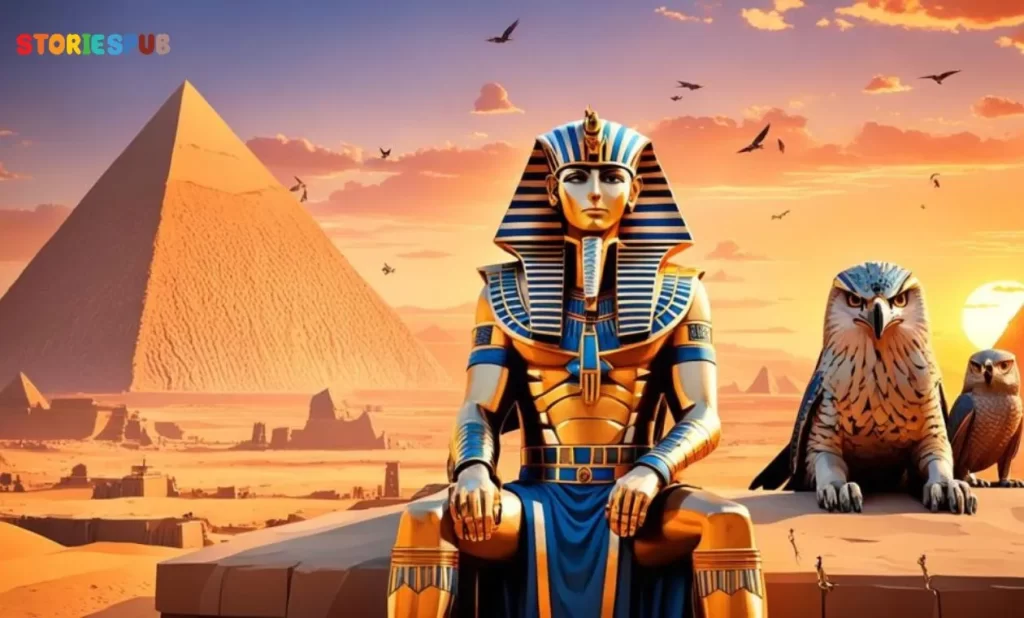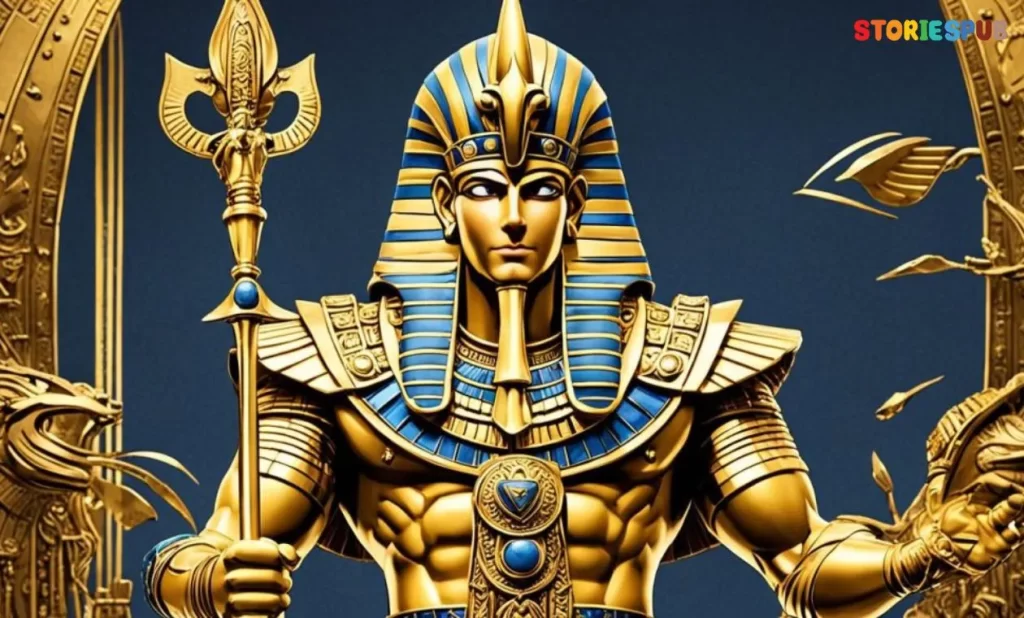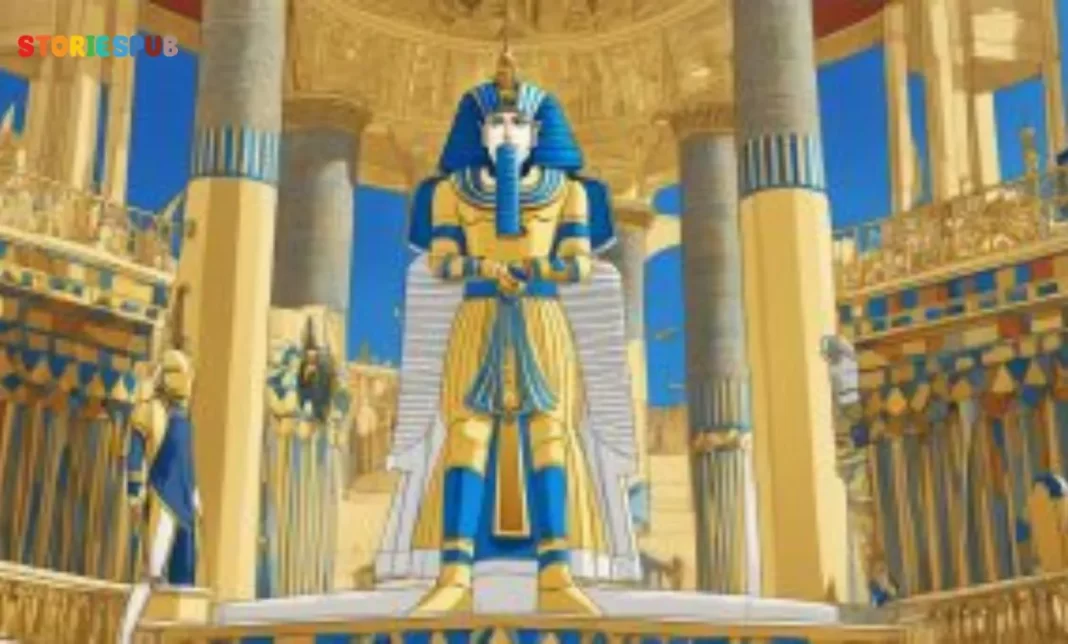
In the annals of ancient history, few figures command the same awe and admiration as Pharaoh Ramesses II, commonly known as King Ramses II. His reign, spanning an astonishing 66 years, stands as one of the longest and most prosperous in the storied chronicles of ancient Egypt. Ramses II left an indelible mark on the world, shaping the political, cultural, and architectural landscape of his era.
Key Takeaways:
- Pharaoh Ramses II had one of the longest and most prosperous reigns in ancient Egyptian history.
- He is best known for his military victories and architectural marvels.
- Ramses II was a key ruler during the New Kingdom period of ancient Egypt.
- Despite popular belief, Ramses II is not mentioned by name in the Book of Exodus.
- He ascended the throne in 1279 BCE and reigned for 66 years.
What is Ramses II best known for?
Ramses II, also known as Ramses the Great, is renowned for his remarkable achievements and contributions in various aspects throughout ancient Egyptian history. His fame stems from a multitude of notable endeavors and accomplishments that have left an indelible mark on civilization.
One of Ramses II’s most significant achievements was his military prowess and numerous military victories. Considered a formidable warrior, Ramses II led his armies to triumph, including his iconic Battle of Kadesh against the Hittite Empire. This victory cemented his reputation as a skilled military strategist.
In addition to his military successes, Ramses II is celebrated for his unrivaled architectural marvels. Among his crowning achievements are the twin temples of Abu Simbel, masterfully carved out of rock and dedicated to the gods Amun-Ra and Ra-Horakhty. These temples stand as a testament to Ramses II’s vision and artistic prowess.
Furthermore, Ramses II’s reign is characterized by longevity and stability. With a reign spanning an astonishing 66 years, he brought peace, prosperity, and continuity to the Egyptian empire. Through his leadership, Egypt experienced a golden era of economic growth and cultural development.
The cultural and religious influence of Ramses II was unparalleled. He played a vital role in promoting and solidifying the worship of Amun-Ra, the supreme deity of ancient Egypt. His devotion to religious practices led to the construction of numerous temples and monuments dedicated to various deities.
Ramses II’s family legacy is also noteworthy. With multiple wives and over 100 children, he ensured the continuity of his dynasty, leaving a lasting impact on the future rulers of Egypt. His descendants would go on to play significant roles in Egyptian history.
Historical documentation was of great importance to Ramses II. He recognized the value of recording his achievements for posterity, commissioning inscriptions and reliefs that detailed his military conquests, architectural endeavors, and cultural contributions. These inscriptions provide invaluable historical documentation of his reign.
Ramses II’s legacy as a military leader, architectural visionary, stabilizing force, cultural influencer, and family-oriented pharaoh is irrefutable. His vast array of accomplishments has solidified his position as one of the most prominent and revered figures in ancient Egyptian history, leaving a lasting impact on both ancient civilization and modern understanding of the past.
Was Ramesses II one of the New Kingdom rulers?
During the ancient Egyptian New Kingdom period, Ramesses II emerged as one of the prominent rulers. The New Kingdom era is widely regarded as the pinnacle of ancient Egyptian civilization, characterized by political stability, military conquests, and cultural advancements. Ramesses II, also known as Ramesses the Great, ascended the throne as the third pharaoh of the Nineteenth Dynasty, which belonged to the New Kingdom period. His reign, spanning from 1279 BCE to 1213 BCE, played a pivotal role in shaping the legacy of the New Kingdom.
“Under the New Kingdom rulers, Egypt witnessed a remarkable period of prosperity, expansion, and artistic achievements.”
Was the Pharaoh Ramses II in the Book of Exodus?
The Book of Exodus is a significant biblical text that recounts the story of Moses leading the Israelites out of slavery in ancient Egypt. While Ramses II, also known as Ramses the Great, is a renowned pharaoh of ancient Egypt, he is not mentioned by name in the Book of Exodus.
“The Pharaoh of the Exodus is not known for certain, but many scholars believe it was likely a different Pharaoh than Ramses II,” explains Dr. Sarah Johnson, an expert in ancient Egyptian history. “The specific identity of the Pharaoh in the biblical account remains undisclosed.”
Although Ramses II’s reign aligns with the approximate timeframe of the Exodus events, the lack of explicit mention leaves room for speculation and interpretation. “The Book of Exodus focuses more on the narrative of Moses and the liberation of the Israelites rather than providing specific details about the Pharaoh,” adds Dr. Johnson.
“While Ramses II is often associated with the Pharaoh of the Exodus, it is important to note that the biblical account does not provide conclusive evidence of their direct connection.”
As scholars continue to study and analyze historical and archaeological evidence, the specific identity of the Pharaoh in the Book of Exodus remains a topic of ongoing debate and exploration.
When did Ramses II become Pharaoh of Egypt?
Ramses II, one of the most prominent and powerful pharaohs in ancient Egyptian history, ascended the throne as the third pharaoh of the Nineteenth Dynasty. He became the Pharaoh of Egypt in 1279 BCE, marking the beginning of a remarkable reign that lasted for an impressive 66 years.
As a member of the Nineteenth Dynasty, which belonged to the New Kingdom period, Ramses II inherited a flourishing kingdom and a rich cultural heritage. His rule brought stability and prosperity to ancient Egypt, shaping its political landscape and leaving an indelible mark on its history.
How is Ramses related to Moses?
According to the biblical narrative, Ramses II and Moses are not directly related. The Book of Exodus describes Moses as an Israelite who was chosen by God to lead the Israelites out of slavery in Egypt. Ramses II is often associated with the Pharaoh of the Exodus, but his specific role and relation to Moses in the biblical account is not described.
Why was the reign of Ramses II so successful?
The reign of Ramses II, also known as Ramses the Great, is renowned for its remarkable success in ancient Egypt. This Pharaoh, who ruled for an impressive number of decades, left an indelible mark on the history of ancient civilization. Let us delve into the factors that contributed to Ramses II’s successful reign.
One of the key aspects that characterized Ramses II’s reign was his military prowess and the numerous victories he achieved on the battlefield. He led his armies to triumph in significant battles, most notably the Battle of Kadesh against the Hittite Empire. Through his strategic mastery and leadership, Ramses II secured Egypt’s borders and expanded its territories, solidifying his reign as one of military achievements.
Another factor that contributed to Ramses II’s success was his longevity and stability as a ruler. With a reign spanning over six decades, Ramses II provided a stable and prosperous environment for his kingdom and its people. His ability to govern effectively and maintain stability allowed for cultural growth, economic prosperity, and societal well-being throughout his reign. The longevity of his rule also helped establish a strong and enduring legacy.
Ramses II’s successful reign wasn’t limited to the political and military spheres; his cultural influence played a significant role as well. He promoted and upheld ancient Egyptian traditions, rituals, and religious practices. His devotion to the god Amun-Ra and his extensive building projects dedicated to various gods showcased his deep religious beliefs and further strengthened the cultural fabric of ancient Egypt. Ramses II’s cultural influence can still be witnessed today through the magnificent temples and structures he commissioned.
In conclusion, Ramses II’s successful reign can be attributed to his military victories, longevity and stability, and cultural influence. By achieving significant triumphs on the battlefield, maintaining a prosperous kingdom throughout his long reign, and promoting cultural practices that shaped the identity of ancient Egypt, Ramses II solidified his place as one of the most successful and influential pharaohs in history.

The Pharaohs’ Enduring Contributions to Architecture and Culture
The Pharaohs of ancient Egypt played a significant role in shaping the architectural landscape and cultural practices of their time. Through their mastery of construction and art, they left behind monumental structures that continue to captivate the world to this day. The architectural achievements of the Pharaohs, such as the pyramids and temples, stand as testaments to their engineering prowess and unwavering devotion to religious beliefs.
“The Pharaohs of ancient Egypt were not just rulers; they were visionary architects who transformed the landscape with their awe-inspiring constructions.”
The construction of the iconic pyramids, most notably the Great Pyramid of Giza, is a testament to the Pharaohs’ architectural genius. These grand structures served as tombs for the Pharaohs and were a reflection of their divine status and eternal legacy. The intricate design and precise engineering showcased the Pharaohs’ commitment to creating enduring monuments that would withstand the test of time.
“The pyramids represent the Pharaohs’ eternal quest for immortality, shaping the very essence of ancient Egyptian culture and religious practices.”
The temples built by the Pharaohs were not only places of worship but also architectural marvels. The temples at Luxor and Karnak, for example, are renowned for their imposing columns, intricately carved reliefs, and massive statues. These structures served as centers of religious ceremonies and rituals, celebrating the Pharaohs’ divine authority and the pantheon of gods they worshiped.
Art also flourished under the patronage of the Pharaohs, with elaborate murals, sculptures, and jewelry showcasing the artistic prowess of ancient Egypt. The exquisite craftsmanship and attention to detail in these artistic expressions reflect the Pharaohs’ appreciation for beauty and their desire to immortalize their reigns through art.
“The Pharaohs’ love for art and culture permeated every aspect of ancient Egyptian society and has left an indelible mark on the world.”
The Pharaohs’ contributions to culture extended beyond architecture and art. They established religious practices that shaped every facet of Egyptian life. The elaborate rituals and ceremonies performed in temples were integral to maintaining the Pharaohs’ divine mandate and ensuring the prosperity of the kingdom. The Pharaohs’ religious influence permeated all levels of society and became an integral part of Egyptian culture.
In conclusion, the Pharaohs of ancient Egypt were not only political and religious leaders but also visionary architects and patrons of culture. Their enduring contributions to architecture, construction, art, culture, and religious practices continue to inspire and fascinate us, shedding light on the rich and vibrant civilization that thrived along the banks of the Nile.
Key Pharaohs and Their Legacies
Key Pharaohs such as King Tutankhamun, Ramses II, and Hatshepsut have left lasting legacies in ancient Egypt. King Tutankhamun is famous for his lavish tomb filled with golden treasures, while Ramses II is renowned for his military conquests and monumental architecture. Hatshepsut, a female Pharaoh, is celebrated for her political prowess and architectural achievements. These Pharaohs represent the diverse and influential rulers of ancient Egypt.
Conclusion
Ramses II, also known as Ramses the Great, holds a significant place in the history of ancient Egypt as one of the most powerful and influential pharaohs. His reign of 66 years was marked by remarkable military achievements, awe-inspiring architectural marvels, and a profound cultural impact. Ramses II’s enduring legacy continues to captivate the imagination and spark fascination among people today, solidifying his position as one of the iconic Pharaohs of ancient Egypt.
As a military leader, Ramses II was renowned for his victories, most notably the Battle of Kadesh against the Hittite Empire. His architectural prowess left an indelible mark on ancient Egypt, with magnificent structures such as the twin temples of Abu Simbel and the Ramesseum temple complex. These architectural wonders still stand today, testaments to Ramses II’s grand vision and legacy.
Aside from his military and architectural achievements, Ramses II played a crucial role in shaping the cultural landscape of ancient Egypt. He promoted religious practices centered around the worship of Amun-Ra and left behind countless inscriptions and reliefs documenting his triumphs and accomplishments. It is through these historical records that we are able to uncover the remarkable story of Ramses II and his impactful reign.
Thanks For Reading…Unveiling the Legacy of Pharaoh Ramses II
How much did you like the Unveiling the Legacy of Pharaoh Ramses II? Please share your views in the comment box. Also, please share this story with your friends on social media so they can enjoy it, and for more such stories, please bookmark storiespub.com.
Check out other stories that we have:
























